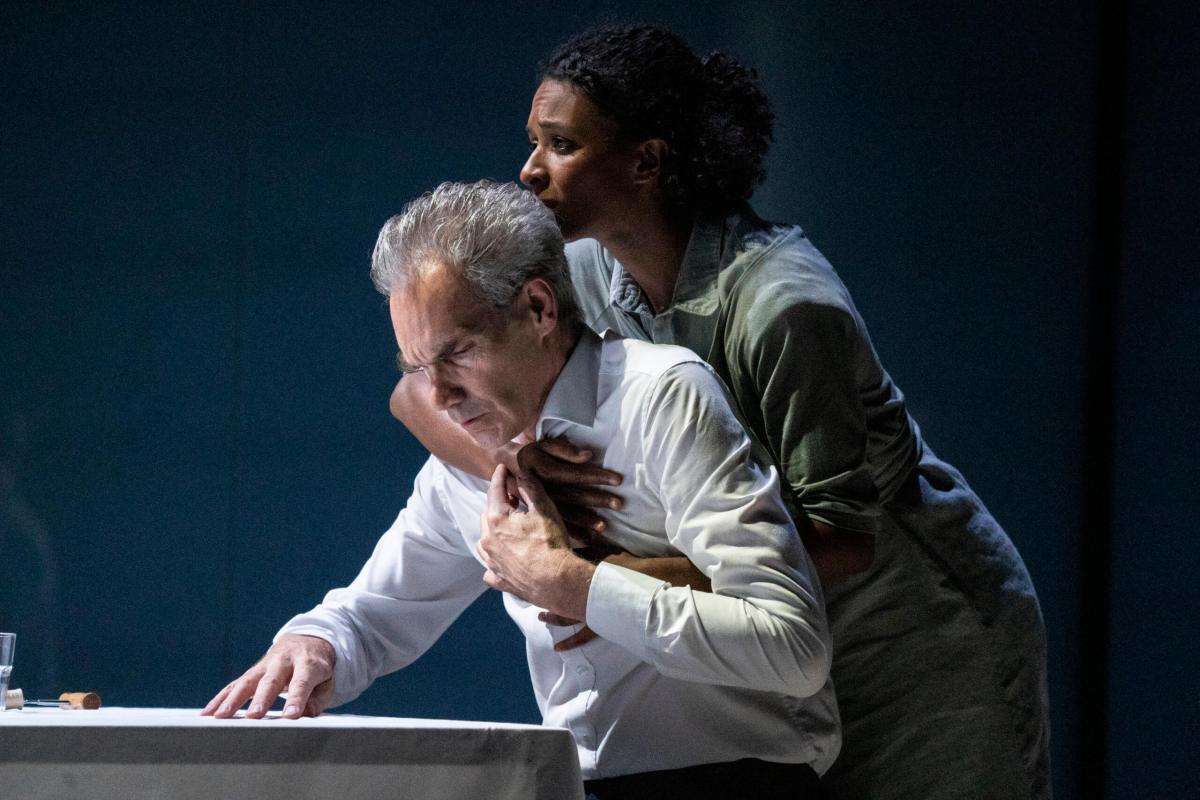When undergrads study the history of Western theater, they traditionally begin with Aeschylus’ “The Oresteia,” the only surviving trilogy of Greek tragedies from fifth century BC. (While “Oedipus Rex,” “Oedipus at Colonus,” and “Antigone” are often grouped together, they are not technically a trilogy.)
However, “The Oresteia” – along with virtually all the other surviving Greek tragedies by Aeschylus, Sophacles, and Euripides – is almost never performed today, likely because the plays are extraordinarily grim, rooted in ancient mythology, and difficult to translate, especially the recurring choral odes.
Speaking as someone who majored in dramatic literature two decades ago, I have been looking forward to checking out Robert Icke’s production of “The Oresteia” (here renamed as simply “Oresteia”), which premiered in London, since the transfer was first announced shortly before the pandemic began.
“Oresteia” is currently running in repertory at the massive Park Avenue Armory with Icke’s production of “Hamlet,” which opened a few weeks ago to wide acclaim. Both productions were delayed due to an injury sustained by actress Lia Williams, who was set to appear in both plays. Williams has been replaced as Klytemnestra in “Oresteia” by Anastasia Hille and as Gertrude in “Hamlet” by Jennifer Ehle.
“The Oresteia” consists of “Agamemnon” (in which Queen Klytemnestra murders King Agamemnon, who just returned home from Troy, to avenge Agamemnon’s murder of their daughter Iphigenia), “The Libation Bearers” (in which Agamemnon’s son Orestes murders his mother in order to avenge his father’s death), and “The Eumenides” (in which a jury finds Orestes innocent and spares his life, thus replacing vendetta violence with the rule of law).
As it turns out, Icke’s “Oresteia” (which runs three and a half hours) is a very loose adaptation of “The Oresteia” with a heavy focus on gender relations. The first 80 minutes take place before the events of “Agamemnon,” when Agamemnon contemplates the murder of his daughter in order to appease the gods and win the Trojan War. One suspects that this was done in order to make Klytemnestra more sympathetic. Icke also frames the play around the trial of Orestes and suggests that the earlier events are his memories, being played out for the jury.
A great deal of the production is slow and pensive in nature, with the characters contemplating different courses of action. At the same time, most of the action feel rushed due to the addition of what is essentially an adaptation of Euripides’ “Iphigenia in Aulis” on top of “The Oresteia.” Nevertheless, one can’t help but admire the scope of the production and the shaded performances, which emphasize the endless struggling of each character.
Park Avenue Armory, 643 Park Ave., armoryonpark.org. Through Aug. 13.















